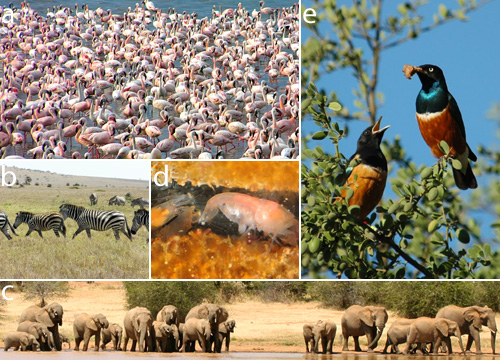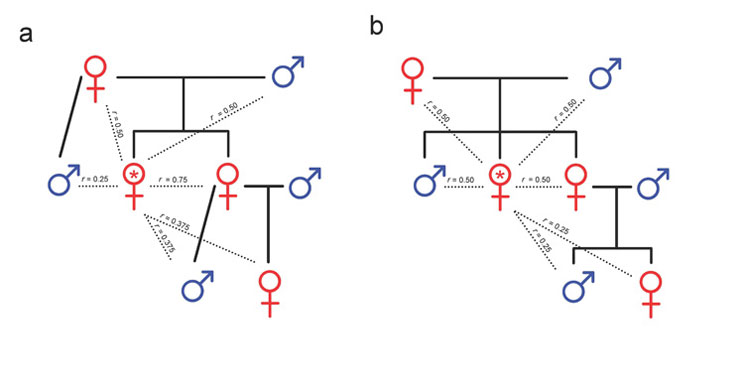An article written by Nowak et al. (2010) entitled The Evolution of Eusociality explains the role that haploidy and diploidy are hypothesized to play in the inclusive fitness theory.
 |
| Figure 4: Solitary and primitively eusocial wasps. (Nowak et al., 2010). |
Another comprehensive review of this topic is discussed in Cooperation, Conflict, and the Evolution of Complex Animal Societies by Rubenstein & Kealey (2010). This article is a bit easier to understand so I would suggest reviewing this one prior to reading Nowak et al. Additionally, some of the vocabulary words in this article are enabled with a click-and-define feature that should help with reading comprehension.
The below images are from the Rubenstein & Kealey article.
 |
| Figure 1: Group-living is widespread in the animal kingdom. |
 |
| Figure 3: Patterns of relatedness in haplodiploid and diploid species. |
And finally, my former undergraduate assistant was tricked by a mimic. He got sick after eating an Indian Strawberry (Duchesnea indica) even though I told him not to. Perhaps the Indian strawberry is a "model" species that the common strawberry (Fragaria virginiana) "mimics"?
 |
| This is an imagine of Indian strawberry. Note: the upright growth habit. (Photo by Mike_tn of Flickr) |
The edible plants community seems conflicted as to whether Indian strawberry is indeed edible or not, but, when in doubt, don't eat it!

No comments:
Post a Comment
Please contact me at Shappell.Ecology -at- gmail.com if you have any questions, comments, or concerns regarding the content of this blog.